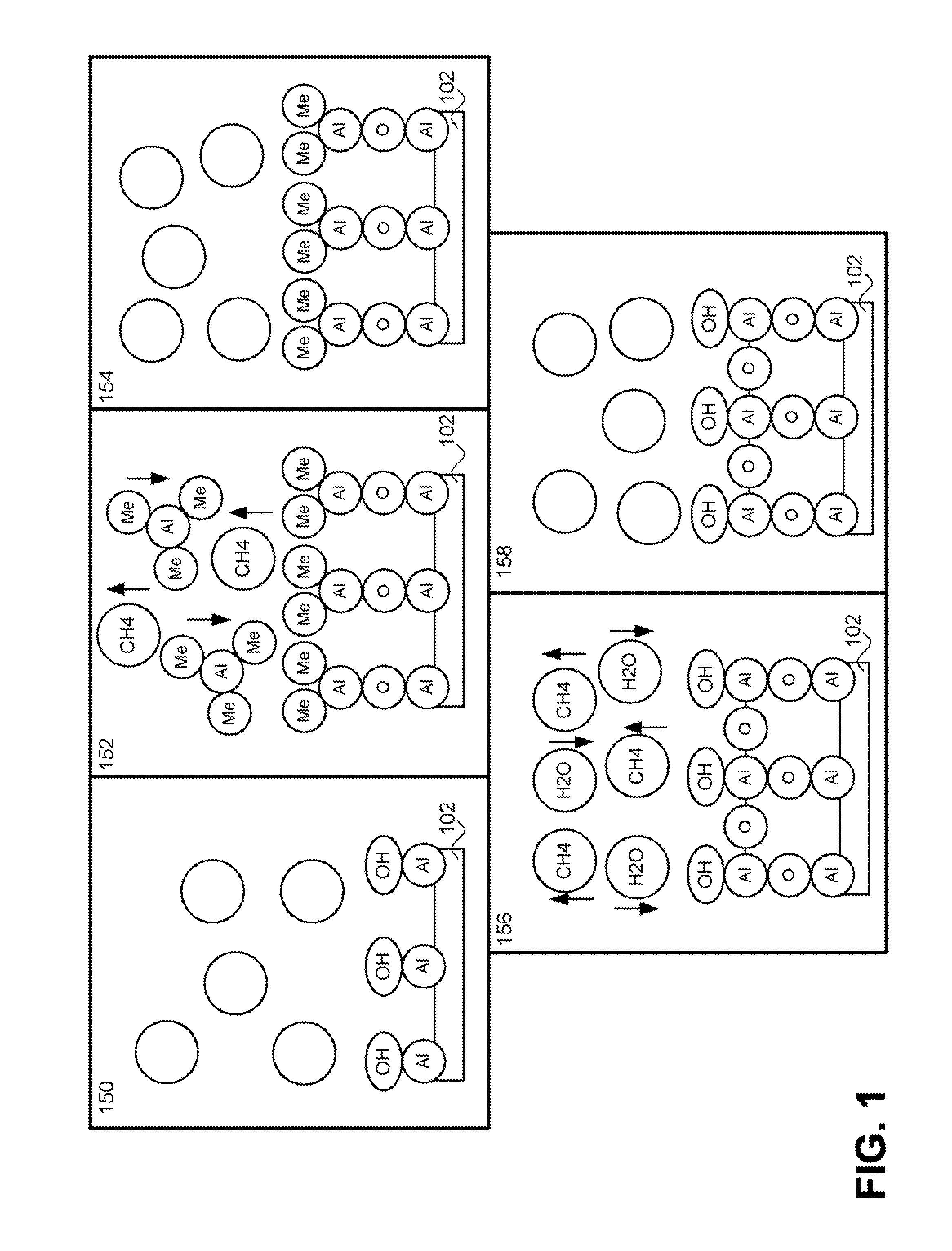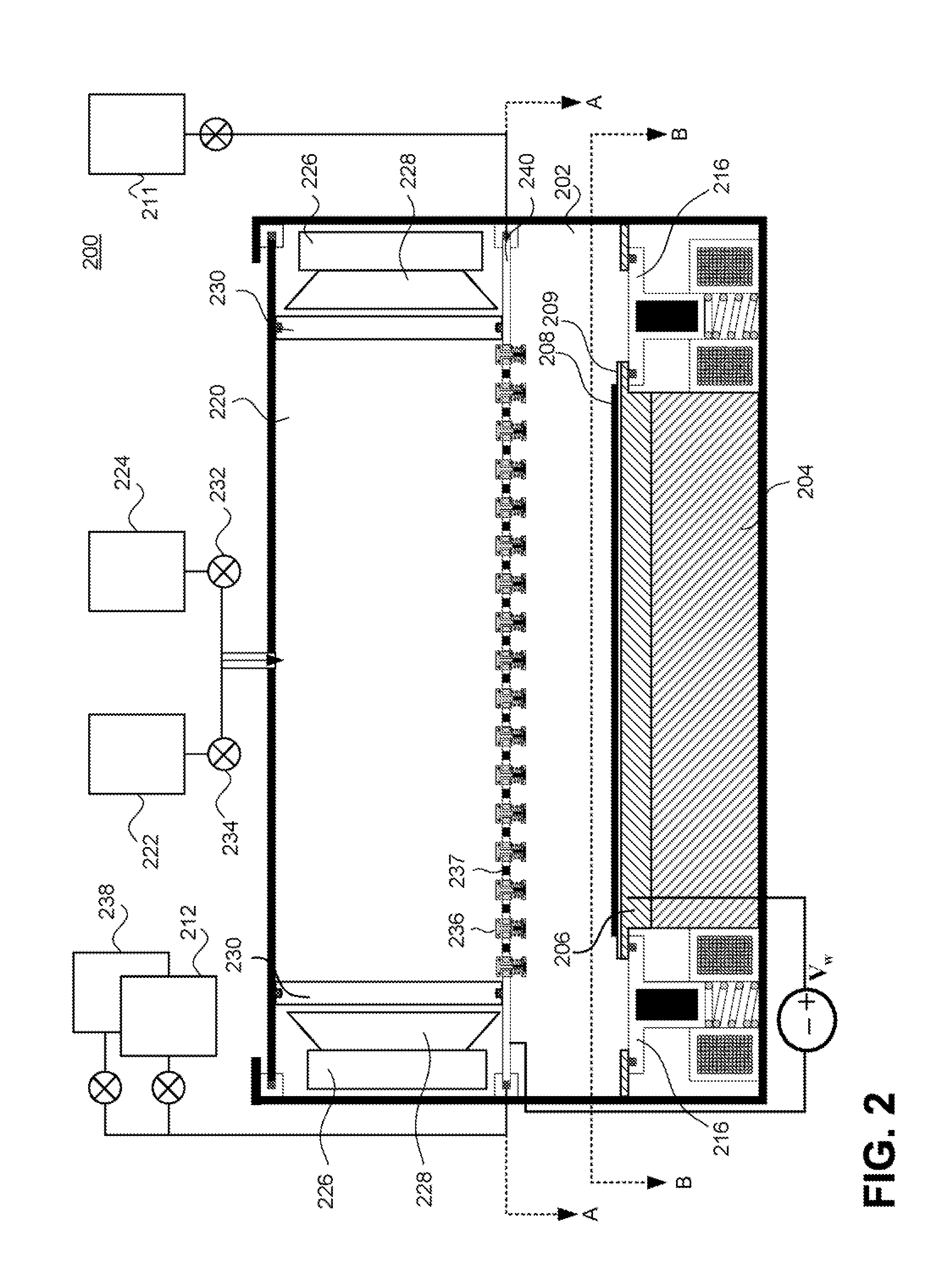Flash Heating in Atomic Layer Deposition
a technology of atomic layer and flash heating, which is applied in the direction of electric heating, electric/magnetic/electromagnetic heating, coating, etc., can solve the problems of contaminant introduction into the deposited film, poor and not going to completion, so as to reduce the incorporation and reduce the incorporation of impurities , the effect of improving the quality of the deposited film
- Summary
- Abstract
- Description
- Claims
- Application Information
AI Technical Summary
Benefits of technology
Problems solved by technology
Method used
Image
Examples
Embodiment Construction
[0045]FIG. 1 depicts a simple ALD process for the deposition of an exemplary Al2O3 film. Substrate 102 has been hydroxylated, resulting in the chemisorption of OH groups on the surface of the substrate. Step 150 depicts a starting surface having OH groups and an inert gas flow. At step 152 of the ALD process, trimethyl aluminum (TMA=Al(CH3)3) is pulsed into the deposition chamber, saturating substrate 102. The TMA is chemisorbed onto the substrate surface, resulting in the deposition of an aluminum containing monolayer (or less) having methyl ligands at the surface. CH4 is liberated during the first step. The deposition chamber is then purged, step 154, to remove any residual precursor or by-products from the chamber. Various means can be employed to purge the chamber, such as by introducing an inert gas into the chamber at inlet port(s) while pumping out the chamber gas through outlet port(s) that are placed downstream of the gas flow. In one embodiment, nitrogen or argon is used a...
PUM
| Property | Measurement | Unit |
|---|---|---|
| temperature | aaaaa | aaaaa |
| vacuum pressures | aaaaa | aaaaa |
| vacuum pressures | aaaaa | aaaaa |
Abstract
Description
Claims
Application Information
 Login to View More
Login to View More - R&D
- Intellectual Property
- Life Sciences
- Materials
- Tech Scout
- Unparalleled Data Quality
- Higher Quality Content
- 60% Fewer Hallucinations
Browse by: Latest US Patents, China's latest patents, Technical Efficacy Thesaurus, Application Domain, Technology Topic, Popular Technical Reports.
© 2025 PatSnap. All rights reserved.Legal|Privacy policy|Modern Slavery Act Transparency Statement|Sitemap|About US| Contact US: help@patsnap.com



